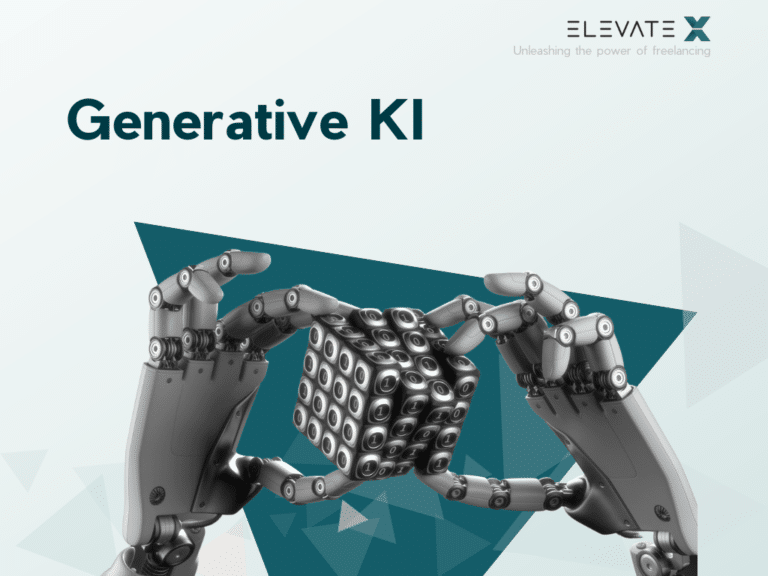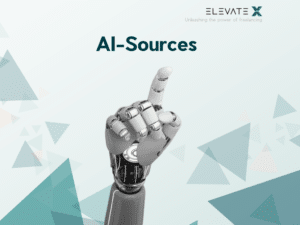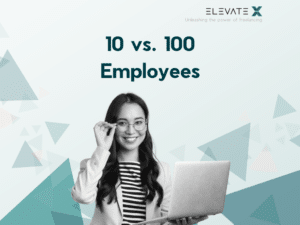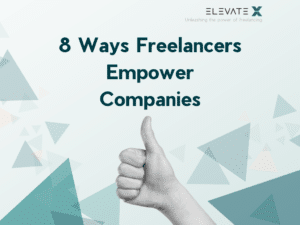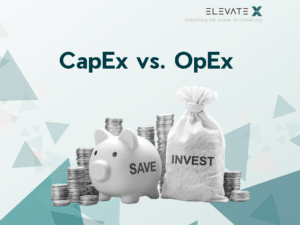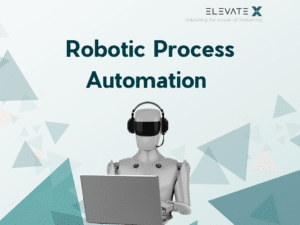A hype has erupted around artificial intelligence, specifically generative AI, even though the concept is not new. Some of today’s advancements still build upon concepts from the 1960s. Nevertheless, with the likes of ChatGPT and others, artificial intelligence has become tangible and practically applicable for many for the first time. In our comprehensive guide, you’ll learn everything about it – from how it works to its impacts.
What Is Generative AI?
Generative AI combines the technologies of machine learning and artificial intelligence. It starts with a foundational dataset – the so-called training data. With these massive datasets, AI can recognize different patterns and teach itself to create comparable, ideally convincingly realistic content on its own, such as texts, images, audio, or other multimedia files.
While machine learning systems learn and reproduce solely from existing data, generative AI can utilize synthetic data.
KEY POINTS
- Generative AI creates synthetic data and is capable of continuously training itself with that data.
- It can create both text (like ChatGPT) and images (like Adobe Firefly), as well as other forms of media.
- The artificial intelligence aims to create unbiased content that reflects human experiences and ways of thinking. Ideally, this works so well that it’s difficult to tell whether the result was generated by AI or human hands.
- Artificial intelligence could become an economic driver of productivity and growth, but it could also render many professions obsolete.
How Does Generative AI Work?
To learn and internalize patterns, such artificial intelligence draws upon up to three technologies, namely:
- Generative Adversarial Networks (GAN)
- Transformers
- Variational Autoencoders (VAE)
GANs consist of two neural networks – the generator and the discriminator. The generator produces new content similar to the source data fed into it. Meanwhile, the discriminator distinguishes between source data and self-generated synthetic data. Both systems alternate during the training phase.
Transformers, including GPT-3 and LaMDA, analyze and understand inputs. This enables an AI to comprehend and later generate coherent images, texts, and more.
VAE is associated with deep learning and relies on complex data models and massive datasets. This allows the system to create high-resolution artwork or emulate celebrity faces. Particularly, this component played a key role in the Hollywood actor strike of 2023.
The Role Of Large Language Models (LLMs) In Generative AI
LLMs draw from extensive datasets to help the AI understand, summarize, and generate content. The first AI language model, ELIZA, was introduced in 1966 at MIT. Typically, LLMs use billions or even trillions of parameters (variables) to derive new content.
For comparison, GPT-2 worked with two billion parameters, GPT-3 with 175 billion, and the current version, GPT-4, with one trillion parameters. LLMs are a subset of transformers and must always be large enough to enable further optimizations by the AI itself.
What Can Generative AI Generate?
In principle, generative AI is not significantly limited in this regard, as the systems are capable of further self-improvement through synthetic data. This in turn creates a cycle that ideally leads to a more authentic, versatile, and genuinely realistic AI.
Already today, generative AI systems can create a variety of content and perform tasks, including:
- Generating texts and summarizing or rephrasing existing texts
- Translations, provided the LLMs are multilingual, meaning the AI has been trained in multiple languages
- Classifying and categorizing content
- Engaging in conversations, both with other AIs and with humans
- Generating images and artworks
- Other multimedia content
Currently, the most common generated content by generative AI is undoubtedly text. Based on this foundation, AI can also be a part of dialogues (in chatbots).
Are ChatGPT, Midjourney, Dall-E, And Bard Generative AI Models?
The short answer: Yes, they are! While ChatGPT is primarily specialized in textual content, Midjourney and Dall-E create images and artworks based on prompts, making them all three part of generative AI models.
Where Is It Used?
The applications of generative AI are extremely diverse, as these models can take on many tasks that were previously or are still being done by humans. Clearly, generative AI can be used wherever texts, content, images, or even code are created. For example, a data analyst who needs to comprehensively process and analyze massive datasets could use AI, just as a web designer might use generative AI to create images, logos, and other visual elements for a project.
According to the EXIST program by the Federal Ministry for Economic Affairs and Climate Protection, based on a McKinsey study, productivity gains of $2.6 to $4.4 billion annually are possible. The study emphasizes the use of generative AI in areas such as:
- Customer service
- Marketing
- Sales
- Software development
- Research and development
Generating content, images, texts, and software code, outsourcing customer interactions, and handling labor-intensive tasks are classic use cases for generative AI. This is why the study attributes the largest productivity gains to industries such as finance and banking, media, life sciences, and the high-tech sector.
The versatility is also evident in specific examples: For instance, AI could transform old photos into the digital age or add color to black and white images. The generative AI can upscale low resolutions in videos and films by filling in necessary gaps. It can optimize processes like facial identification, translations, or summarizing large datasets. Even in medicine, generative AI can be used to detect tumors early or enhance X-ray images by calculating and visualizing different angles. For patients in need of a prosthesis, generative AI could internalize individual movement patterns and subsequently develop a prosthesis tailored to those specific movement patterns. Just like artworks, AI can create, summarize, and edit texts, as noted in the previous sections.
The Best Generative AI Apps
ChatGPT is undoubtedly the most well-known name. but it’s far from the only model or app. Freelancers from various industries, as well as companies, can make use of a range of AI apps, some of which also come with specific specializations – such as GitHub CoPilot, which is suitable for developers and coders.
Well-known apps for developers include:
- ChatGPT
- GitHub CoPilot
- Kite
- and Tabnine
You can find a comprehensive overview in a separate blog post on our platform!

What Impact Does Generative AI Have On The Workforce?
The effects on the workforce can be broadly divided into two main areas: On one hand, productivity gains are possible when human employees delegate a range of time-consuming tasks to AI. On the other hand, jobs could become entirely obsolete if they are now effortlessly handled by AI without human intervention.
As a result, generative AI is poised to have the most significant impact on the job market since the Industrial Revolution. Countless professions may no longer be needed or require as much manpower. Creatives like copywriters, graphic designers, UI designers, programmers, interpreters, translators, and journalists may anticipate reduced demand in the market. The same holds true for roles like customer support staff, as a generative AI could take over customer interactions.
Conversely, a handful of new professions will emerge due to the AI revolution, with the most obvious and well-known example being the role of a prompt engineer. One thing is certain: the future of work will undergo change.
Are you looking for a Prompt Engineer?
What Dangers Does Generative AI Pose?
In the medium and long term, it poses the danger of rendering humans, their crafts, and talents obsolete. This could lead to a high unemployment rate for jobs replaced by AI, as well as resulting social tensions. Violations of data protection regulations or, for instance, copyright infringement are additional risks. Both individuals and businesses risk losing their identity when they predominantly rely on AI instead of a human touch. Distortions, discrimination, lack of transparency, spirals of misinformation, and regulatory risks are further challenges.
Conclusion
Generative AI will not disappear – unlike in Stanley Kubrick’s “2001: A Space Odyssey,” it’s unlikely to turn against humans anytime soon. Nonetheless, significant social upheavals can occur through generative AI, especially if it renders many jobs obsolete. At the current stage, AI is primarily seen as a supportive element that has not yet replaced humans.
It combines artificial intelligence with machine learning to learn from massive datasets and continuously improve by generating its own synthetic data. This allows generative AI to create images, texts, deepfakes, translations, and more.
The system is initially fed with data and then learns using technologies like GANs and VAEs.
Yes, ChatGPT is a generative AI. In the fourth generation (GPT-4), the system utilizes around one trillion parameters.

